Senegal: Regional differences in the timing of the lean season and the implications for food security programme delivery
Lessons from ARC Replica
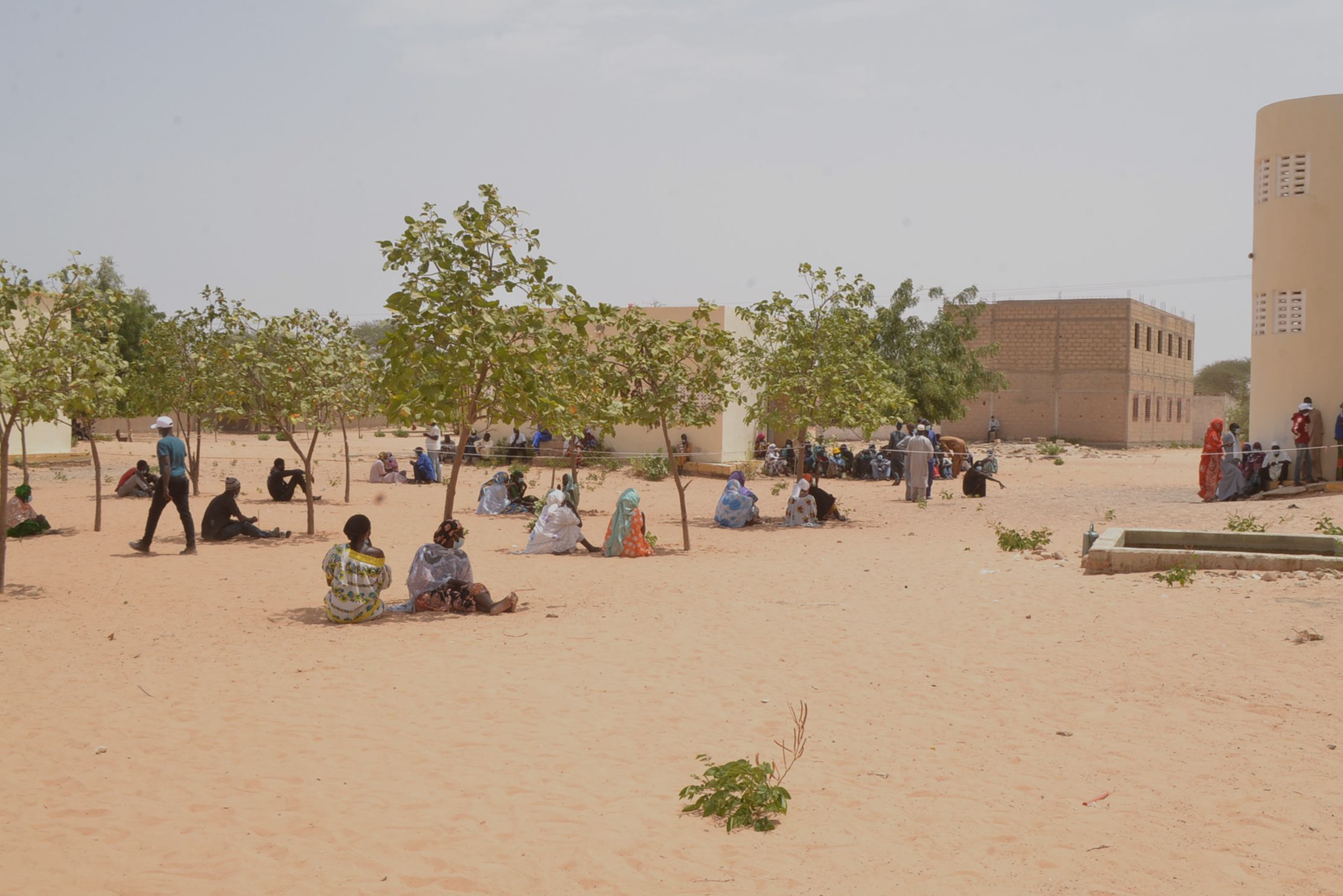
In July 2019, Start Network and the government of Senegal each purchased an insurance policy against drought from African Risk Capacity (ARC). If rainfall levels dropped below a pre-defined threshold, Start Network members and the government of Senegal would receive payouts to implement timely and coordinated actions to protect communities at risk.
When the pre-agreed triggers were met in November 2019, a payout of US $12.5m was made to the Government of Senegal and another US $10.6m was paid to Start Network. The payout to Start Network remains the largest-ever funding allocation to civil society for early humanitarian action.
EVALUATION
As part of the evaluation, in-depth interviews were held with households to better understand the timing and impact of the assistance. The assistance of cash and fortified flour distributions were timed to align with an assumed lean season of June-August. However, interviews with households suggested that the start of lean season is not homogenous across Senegal. These differences are supported by hydrogeological differences across the country and suggest that a staggered rather than uniform distribution may be more appropriate in order to support households in a timely manner.
In August 2020, thirty-two in-depth interviews were held with household representatives from all eight regions that were targeted for assistance. Within these regions there were sixteen departments (the administration level down from a region) that were targeted with two respondents for each department, one male and one female. Respondents were asked questions relating to their household situation and livelihoods. This included questions surrounding household situation prior and after the distribution, as well as predictions relating to crop yield and the success of the remaining agricultural season. Households were asked when they generally enter the lean season, with all aside from one respondent reporting a starting month. Some respondents also mentioned the duration they are in the lean season, and some clear trends emerged.
Households in the Northern and Central regions of Senegal (Saint Louis, Matam and Louga) considered themselves to be in the lean season far earlier than the expected June-August period. Of the six household interviews conducted in these three regions (two respondents from Saint Louis, four from Matam, two from Louga) all households reported that they reached the lean season – defined as when their grain stores and other prepared resources become depleted – during March or earlier.
“Our lean season begins in March and continues through to July. During this period, it is difficult for us to meet our food needs because our grain stocks are running out and our other income is not sufficient to fill the gap. To prepare for this period, we often resort to going into debt. We borrow money from close neighbours who are better off than us and at other times we buy food on credit through the local shopkeeper.” (Female respondent from Matam in Matam region)
“The lean season can run from March-November. At the beginning of March, we have run out of cereal reserves. March marks the beginning of our difficulties in terms of finding enough income to meet our needs. To prepare for the lean season, the household often resorts to selling our livestock. We sometimes go to the weekly markets to do small business in order to have more income. If necessary, we also borrow money or food on credit from our neighbours.” (Female respondent from Podor in Saint Louis region)
“Our lean season runs February-September. As early as the beginning of February, we had no more food in stock. To cope with this, the head of the household sought to make more income through his two jobs since we don’t derive income from any other sources.” (Male respondent from Matam in Matam region)
"The lean season generally lasts from November-August. During these 9 months, we face great difficulty in meeting our basic needs. To prepare for the lean season, the household often resorts to day labour as well as selling agricultural products to make enough income to cover our basic needs." (Male respondent from Podor in Saint Louis region)
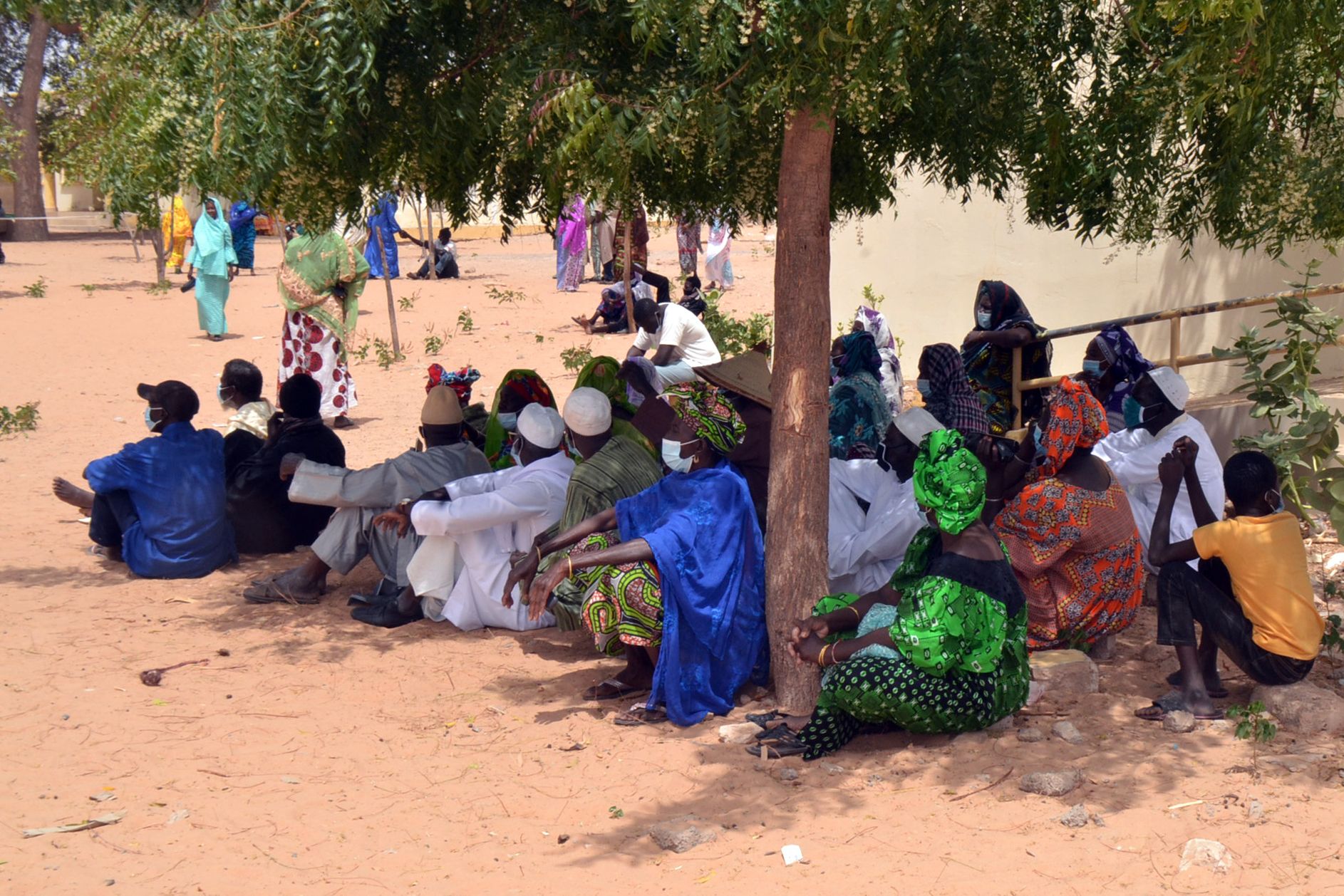
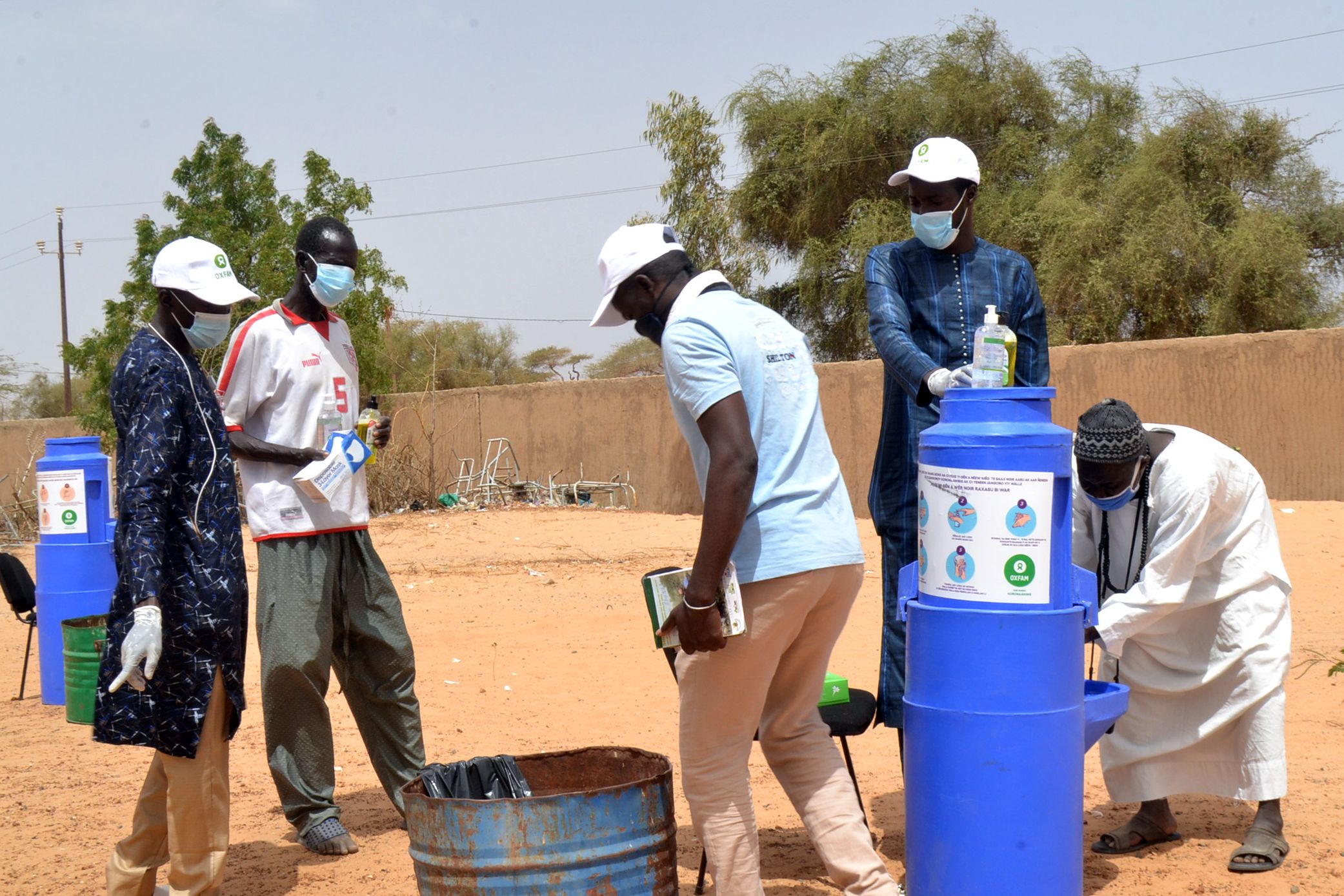

Some households in South and Central Senegal reported a later start to the lean season, starting in August and lasting until September (or later). All households in Kaffrine, (central Senegal) two of the three respondents from Kolda (located in the south of Senegal) and a couple of respondents from Djourbel and Thies (western Senegal) all reported their lean season to begin in August, much later than the predicted month of June.
“Our household generally reaches the lean season between August and September. During this period, we cannot be far from the fields, so all our other income-generating activities are practically blocked. But we prepare for the lean season before it arrives so that we have at least something that will allow us to pay the daily expenses.” (Male respondent from Bambey in Djourbel region)
“Our lean season is August-September. This is the most difficult time for us, as our crops are not yet ready to be harvested but our stocks are depleted, and we can’t do anything other than work on planting and maintaining our fields.” (Male respondent from Tivaouane in Thies region)
“We are in the lean season during the month of August, when our grain stocks are exhausted, and we have not yet harvested. To cope with the lean season, we ask for help from those who are better off than us or buy food on credit until after the harvest when we can pay off our debts.” (Female respondent from Kolda in Kolda region)

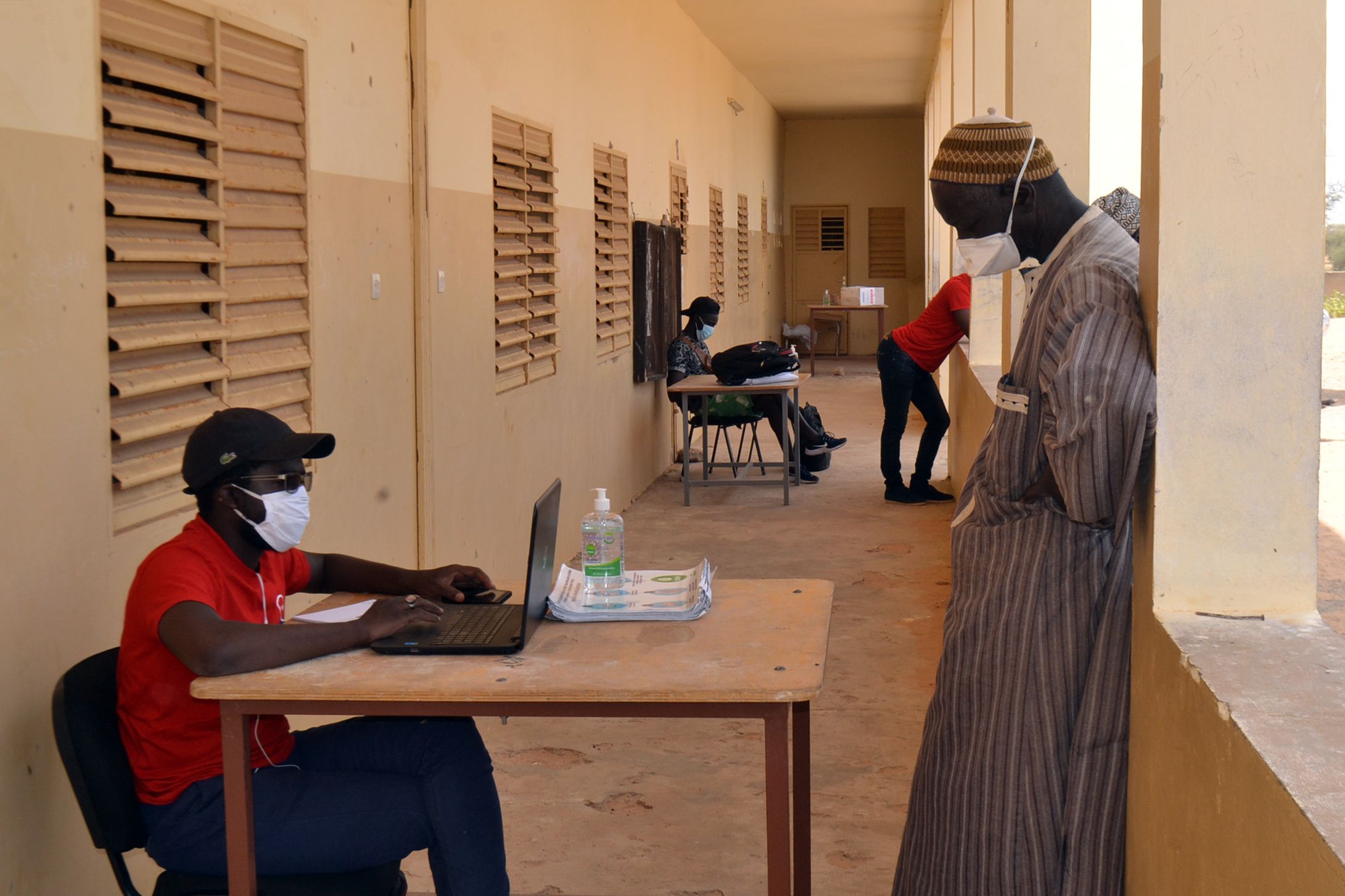
Females in the western and southern regions tended to report slightly earlier starts to the lean season than their male counterparts. This is clearly demonstrated in the map (Figure 1). Although there are no clear factors to explain this, some of the female respondents reported that they had a smaller amount of land for farming as compared to the male respondent in the same department, which could explain why female headed households ran out of their stored grain earlier. Some female respondents also reported that they rely on remittances from their husbands working away.
“The lean season begins in March and lasts until September. During this period, I do masonry to take care of my family. During previous drought years, we never received help from the government or an NGO. However, under President Wade’s government — within the framework of the GOANA programme — one of my bothers received 20,000FCFA.” (Female respondent from Thies in Thies region)
“We are in the lean season from June-August. During the lean season, we manage with whatever means we can. I go to the market to sell my bissap and my wife sells bread — we manage with this. It is a very difficult period for us.” (Male respondent from Thies in Thies region)
"The lean season is from April to October. During this period, my brother does masonry (2000 or 2500FCFA per day), the women sell milk (1500FCFA per day), and another member of the family uses his horse to carry luggage to the market (2000-3000FCFA per day). This income is how we support our household through the lean season." (Female respondent from Mbacke in Djourbel region)
"Our lean period is July-September. During this period, we sell cattle and sometimes have 1000-1500FCFA per day. Our main source of income comes from agriculture. We grow peanuts and millet and have 3ha. Last year’s production was low compared to a normal year. We only harvested 5 x 100kg bags of millet and 10 x 100kg bags of peanut. Normally, we can harvest 1.5 tonnes of peanuts or more. This is because we didn’t see much rain last year. All the millet was consumed by the household; half of the peanuts were sold, and the other half was processed for household consumption, as such, our household stock of millet ended in June." (Male respondent from Mbacke in Djourbel region)

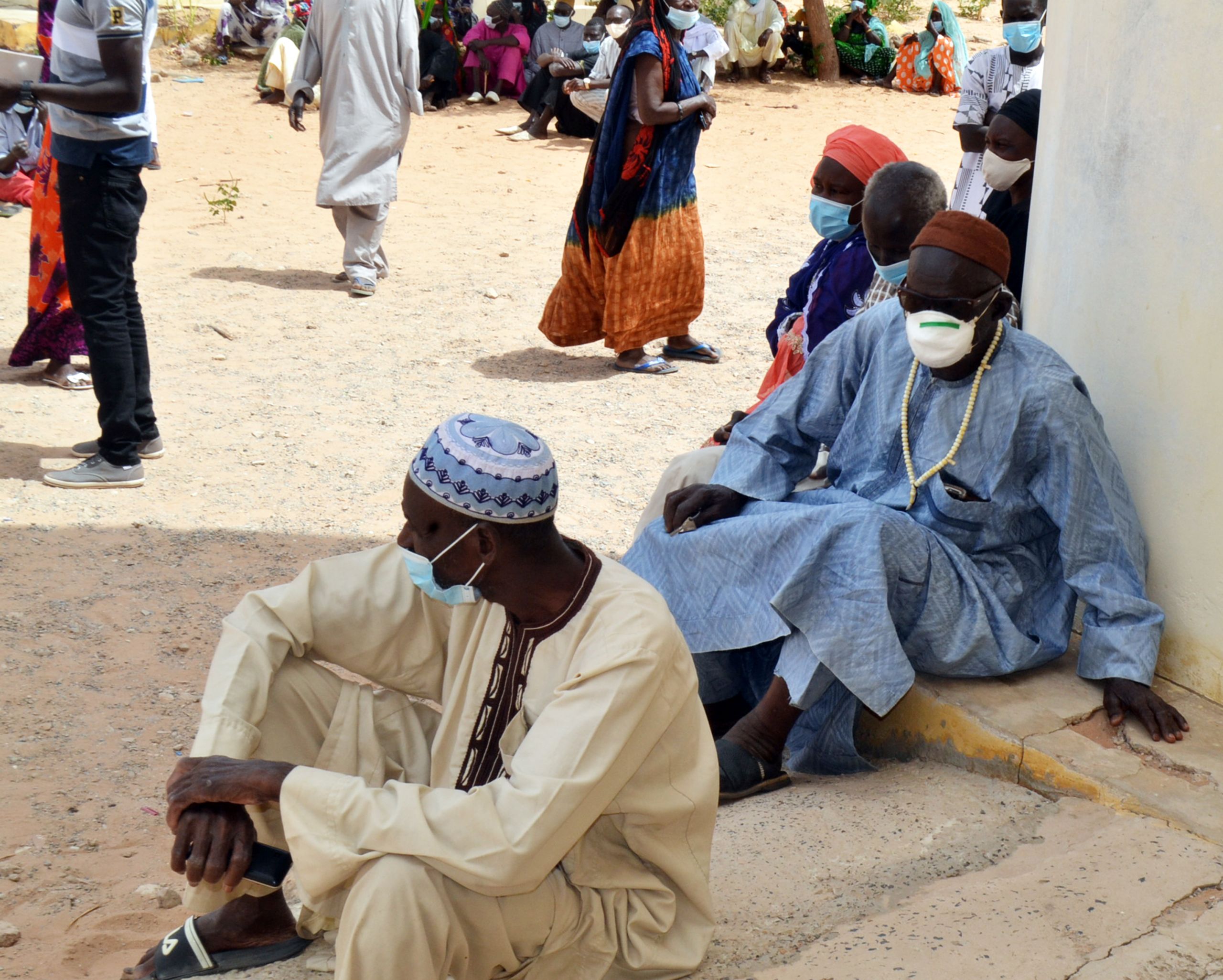
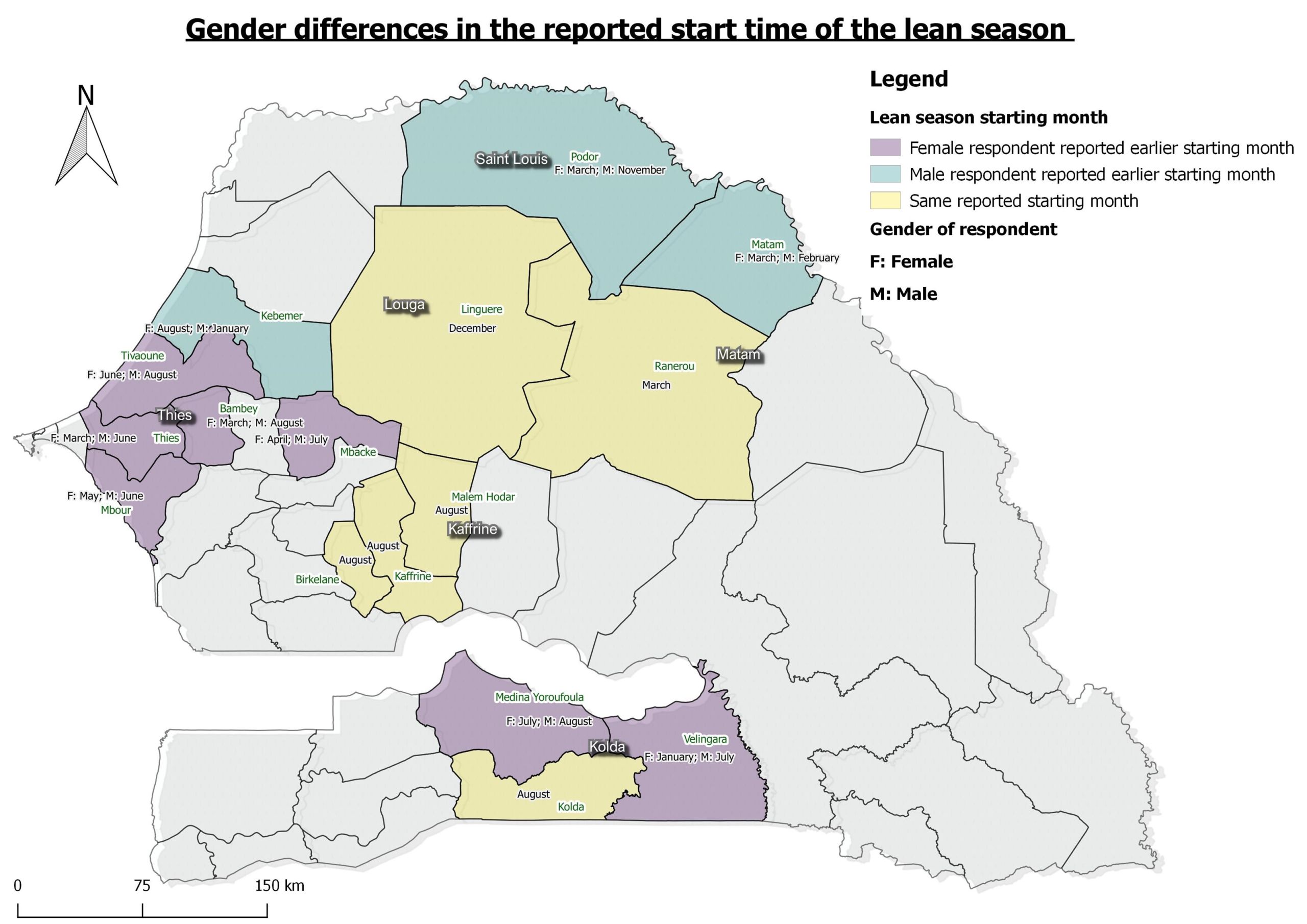
The regional trends found in our dataset align more generally with climatic trends found in Senegal which has three distinct climates: hot desert climate (north), hot semi-arid climate (central) and tropical savanna climate (south). These differences create variations for both precipitation and temperatures across the country. Saint Louis and Matam are the northern regions in Senegal and recognised for their dryness and heat due to the warm-desert climate. Predictions show that by 2060 there could be an increase of 1.1– 3.1°C across Senegal, with these northern regions most at threat [1]. Precipitation is lowest in the Northern regions (figure 2) and over the last couple of decades has become less dependable due to desertification extending itself further into the country from the Sahara as a result of climate change [2].
Figure 2 (below): average annual rainfall (mm) in Senegal taken from Roudier et al (2014) publication [3]
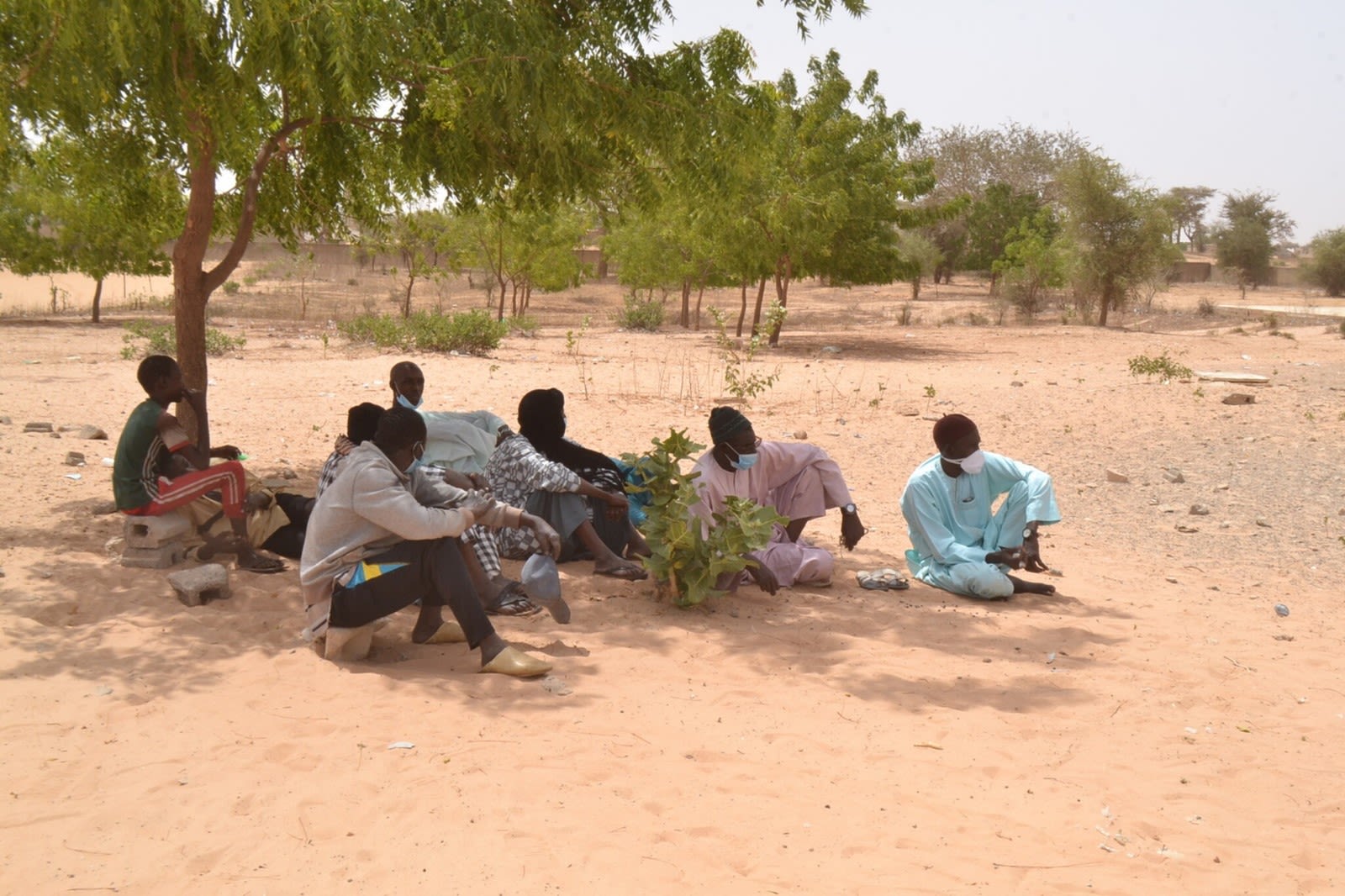
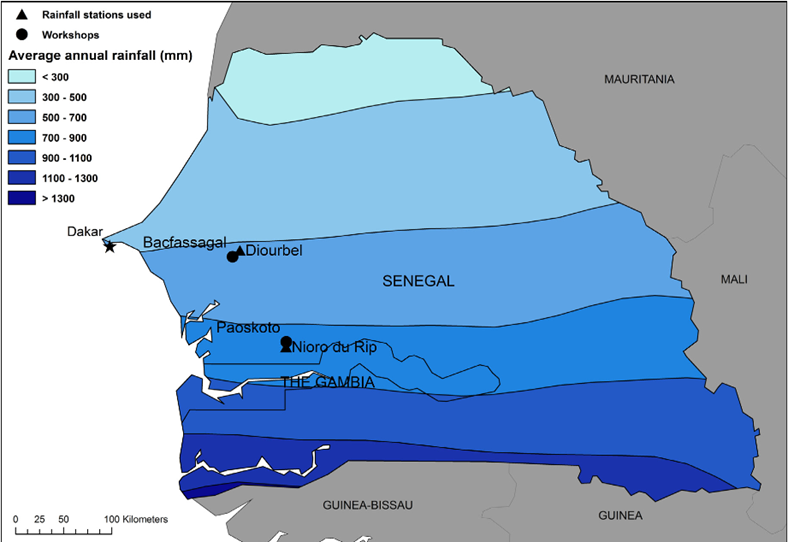
Climate change will alter the rainfall and temperature patterns across Senegal, with important implications for the start and duration of the lean season and food insecurity patterns across the country. Understanding these changes in the needs of communities across the country will be important in ensuring timely assistance. Such ‘windows of opportunity’ can be activity specific, helping to identify the time when regions need this support, and the type of activity.
Integrating local knowledge with weather forecasting could help predict 1) onset of the lean season and 2) whether it will be a good/bad wintering. Projects that base timings for interventions on historical data may become outdated and not useful, if climate change continues to further regional variations across the country. This will be detrimental to the livelihoods of the population, especially those reliant on agriculture or pastoralism as their primary income source.
Successful use of local knowledge through a project can be seen through “Creative Drought”[4] who work closely with the local community to collect existing narratives relating to drought and create hypothetical future drought scenarios using scientific modelling, which is then fed-back to the community. For future interventions, organisations may wish to adopt this approach and include local knowledge and narratives to obtain a more holistic understanding of in-country situations.


ARC Replica is run in partnership between Start Network, the Government of Senegal, African Risk Capacity (ARC) and the World Food Programme. It is funded by the German Federal Ministry for Economic Cooperation and Development (BMZ) through the German Development Bank, Kreditanstalt für Wiederaufbau (KfW).
[1] USAID Climate Change Risk Profile: Senegal
[2] UNDP Climate Change Adaptation: Senegal
[3] Roudier, P et. al (2014) The role of climate forecasts in smallholder agriculture: Lessons from participatory research in two communities in Senegal. Climate Risk Management, 2, pp.42-55.
[4] Creative Drought